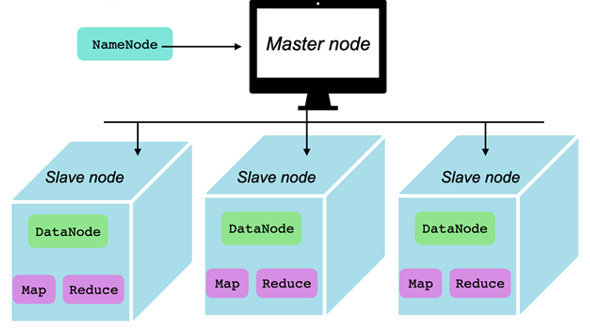Hadoop Distributed File System (HDFS)
Introduction
The Hadoop Distributed File System (HDFS) is utilized for storage permission in a Hadoop cluster. It's designed for providing a commodity hardware scalable and highly available storage cluster for distributing processing and querying workloads.
Node Types
HDFS stores data in administrator definable sized chunks (default of 128MB) that get distributed across the nodes of the HDFS cluster. This means that a NameNode is needed to maintain all the references and metadata to all the DataNodes that store the actual data in chunks.
Name Node
The NameNode is effectively the master node of the cluster. It stores file and data references and their metadata. Without it there's no way to map files and datasets to the chunks they reside in and what nodes those chunks are accessible in. It also holds the transaction log that stores all changes to the data including modification requests, creation requests and removal requests. It also plans out changes to the file system and divides up the operations to the respective nodes where the data is stored.
Data Nodes
DataNodes are mainly utilized for storing data in the Hadoop cluster. The more DataNodes that are present in the cluster, the more data the Hadoop cluster can store and the faster operations will perform. Because they are used to store data, the machines provisioned for them should have large amounts of storage.

As mentioned, data in the HDFS is always broken up and stored in 128MB chunks. So if a 500MB file were stored in the cluster, it would be broken down into three 128MB chunks and one 116MB chunk. Those chunks would then be dispersed between all the available clusters based on the replication factor, which defaults to 3. That means each chunk will be stored three times on three different nodes.